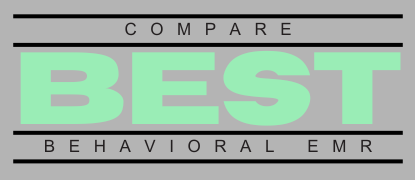The evolution of technology has significantly impacted every aspect of our lives, including healthcare. Specifically, the advent of Electronic Medical Records (EMR) has redefined the way healthcare providers manage their practices, especially in the field of behavioral health. With a quality behavioral health EMR system, clinicians can streamline their operations, enhance patient care, and optimize overall efficiency. This article discusses how you can leverage these systems to improve your behavioral health practice.
The Importance of a Behavioral Health EMR
An EMR system is more than a digital version of a patient’s paper chart. It’s a dynamic solution that encompasses a wide range of capabilities, from documentation tools and practice management to improved communication and data analysis. Here are some reasons why a behavioral health EMR is crucial for your practice:
– Efficient documentation: EMR systems provide tools for quick and accurate documentation of patient encounters, reducing the time spent on paperwork and minimizing the risk of errors.
– Improved patient care: By providing a comprehensive view of a patient’s history, EMR software enables clinicians to make informed decisions about treatment plans.
– Streamlined practice management: From scheduling appointments to managing billing, a behavioral health EMR system can automate various administrative tasks, freeing up time for clinicians to focus on patient care.
– Secure data management: EMR systems ensure the confidentiality and security of patient data, adhering to the standards set by the Health Insurance Portability and Accountability Act (HIPAA).
Choosing the Right Behavioral Health EMR
Selecting an EMR system for your practice can be an overwhelming task, given the multitude of options available. Therefore, it’s crucial to consider several factors to ensure the system aligns with your practice’s needs:
– Usability: The system should be user-friendly, with intuitive interfaces and minimal learning curves.
– Customizability: The EMR should be adaptable to your practice’s workflows and processes.
– Support and Training: The vendor should provide ample support and training to ensure a smooth transition to the new system.
– Integration: The system should integrate seamlessly with your existing software and hardware.
– Cost: Consider the total cost of ownership, including purchase price, implementation costs, and ongoing maintenance and support fees.
Maximizing the Benefits of Your Behavioral Health EMR
Once you have chosen the right EMR system, it’s crucial to leverage its features to the fullest to improve your practice’s efficiency and patient care.
– Training: Ensure all staff members are adequately trained on the system. This will not only improve efficiency but also reduce the risk of errors.
– Data analysis: Use the system’s data analysis capabilities to gain insights into your practice’s performance and make informed decisions.
– Continuous improvement: Regularly reevaluate your workflows and processes to ensure they are optimized for the system.
– Patient engagement: Use the system’s patient portal to improve communication with patients, enabling them to access their health records, schedule appointments, and communicate with clinicians.
– Regulatory compliance: Ensure your system is always updated to meet the latest regulatory requirements.
To learn more about how you can benefit from a behavioral health EMR, consider taking advantage of our free practice analysis.
Conclusion
Investing in a behavioral health EMR is not merely about adopting new technology; it’s about transforming your practice to deliver better patient care and improve operational efficiency. With the right system and effective utilization, you can certainly take your practice to new heights.
**Meta Description**: Explore how a behavioral health EMR can optimize your practice’s operations, enhance patient care, and improve efficiency. Learn about choosing the right system and maximizing its benefits.
